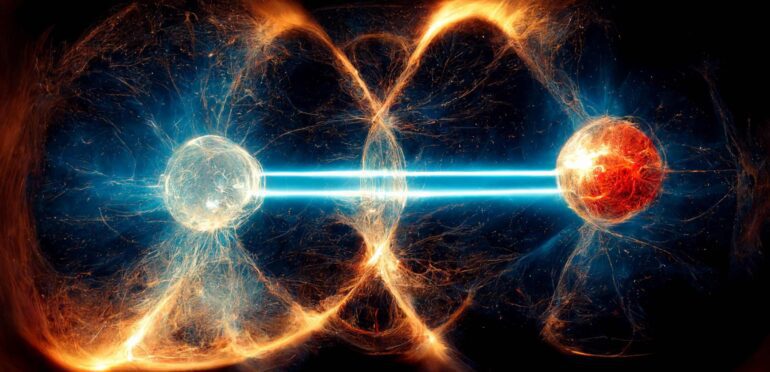TL;DR:
- Humanity explores nuclear fusion for clean energy.
- Nuclear fusion involves hydrogen isotope fusion, creating helium and energy.
- Precise control of hydrogen isotopes is crucial for fusion on Earth.
- Machine learning and plasma spectroscopy combine for optimal isotope ratios.
- Deep learning aims to predict tritium content, replacing time-consuming spectroscopy.
- Fusion research integrates machine learning, offering new possibilities.
- Machine learning could extend to various fusion devices like tokamaks.
- Vision to transform fusion from theoretical concept to practical reality.
Main AI News:
In the relentless pursuit of sustainable and eco-friendly energy sources, humanity finds itself at a crossroads, facing a pivotal juncture in the exploration of nuclear fusion. The profound contrast between the alluring prospect of limitless power generation and the daunting issue of radioactive waste generated by current nuclear fission plants prompts us to delve into the promises held by nuclear fusion.
The concept of nuclear fusion, the very force that drives the Sun and the stars, hinges on the fusion of hydrogen isotopes under extraordinary conditions. This extraordinary union gives birth to helium, accompanied by a release of energy arising from the variance in mass between the original elements and the newly forged helium.
The aspiration to harness this remarkable power on Earth hinges on the meticulous manipulation of hydrogen isotopes in the fusion process. The intricate dance of deuterium and tritium, favored isotopes for fusion, is particularly challenging due to regulatory constraints on tritium usage to ensure safety. This is where an unlikely ally emerges – the realm of machine learning.
Revolutionizing Fusion through the Marriage of Machine Learning and Spectroscopy
A recent announcement has unveiled a groundbreaking synergy between artificial intelligence and nuclear fusion research, poised to redefine our comprehension of clean energy. At the heart of nuclear fusion lies the necessity to determine the optimal blend of hydrogen isotopes – a task currently performed through the time-intensive method of spectroscopy.
In a seminal paper featured in The European Physical Journal D, Mohammed Koubiti, an esteemed Associate Professor at Aix-Marseille Universite in France, introduces an ingenious strategy that fuses machine learning with plasma spectroscopy. This innovative approach seeks to unveil the ideal ratios of hydrogen isotopes that fuel the performance of nuclear fusion plasma.
Central to Koubiti’s endeavor is the intricate challenge of harmonizing the amalgamation of hydrogen isotopes, with a special focus on deuterium and tritium. Though renowned for their efficiency, regulatory thresholds impose limitations on tritium usage, necessitating an inventive solution. Here, machine learning enters the scene, aimed at revolutionizing the landscape.
Dawning of a New Era: From Spectroscopy to Deep Learning
The ultimate ambition is to bypass the time-consuming analysis of spectroscopy, either by replacing it or integrating it with deep learning methodologies. Koubiti elucidates, “The aim is to steer clear of spectroscopy and employ deep learning to anticipate tritium content within fusion plasmas.” While the current study marks a preliminary stride, Koubiti continues to mine spectroscopic data, identifying elements that can empower deep learning algorithms to prognosticate tritium behavior in fusion plasmas across temporal dimensions.
The horizons unfurled by the convergence of machine learning and nuclear fusion research are breathtaking. Beyond its immediate implications in forecasting tritium content, Koubiti envisions the extension of deep learning techniques to diverse magnetic fusion devices, encompassing iconic tokamaks like JET, ASDEX-Upgrade, WEST, and DIII-D, even transcending to stellarators.
Tokamaks, dynamic machines that exploit potent magnetic fields to encase scorching plasmas in a toroidal form, hold the promise of clean fusion energy. Koubiti’s vision amplifies the quest to pinpoint non-spectroscopic facets that bear significance for precise deep learning predictions. This trajectory holds the potential to redefine our grasp of nuclear fusion, catalyzing its evolution from a theoretical notion to a tangible reality.
Conclusion:
The fusion of machine learning and nuclear fusion research marks a pivotal moment in the quest for clean and sustainable energy sources. This synergy not only promises the optimization of hydrogen isotope ratios but also opens doors to predictive deep learning models. As the integration of machine learning extends to diverse fusion devices, the market stands poised for a transformational shift in the energy sector. The fusion of innovation and technology offers hope for a cleaner and more sustainable future, aligning with the pressing need to address carbon emissions and climate change challenges.

